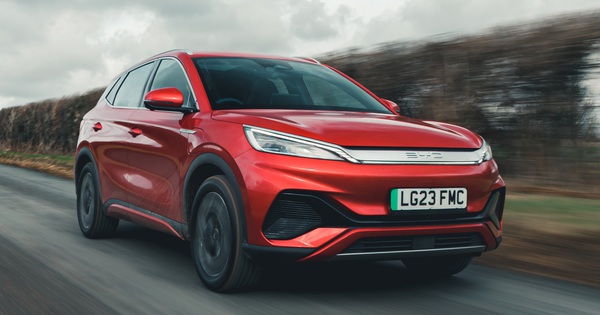Chinese Electric Cars Suddenly ‘Expensive as Fresh Shrimp’ Worldwide, Still Losing to Japan by 15 Times
The Chinese automotive industry has been trying to penetrate international markets for over a decade without much success. However, their investment in electric vehicles (EVs) has put them ahead of their competitors in recent years.
In their latest plan, BYD announced the deployment of 8 ships over the next 2 years to increase their export capacity. By the end of 2023, BYD surpassed Tesla to become the world’s largest EV manufacturer.
BYD’s Chairman, Wang Chuanfu, stated that they will deploy an additional 7 car-carrying ships within the next 2 years to address the vehicle shortage in certain markets.
In January, BYD’s first ship named BYD Explorer No. 1, which carries electric and new energy vehicles, left the international port in Shenzhen, China. With a capacity of 7,000 cars, it is the first car-carrying ship produced in China exclusively for a domestic automaker to export vehicles worldwide.
Currently, BYD has two more car-carrying ships under production in China, each with a capacity of 7,000 vehicles.
The decision to invest in car-carrying ships was driven by the increasing charter costs, and owning ships will help BYD reduce transportation expenses.
China exported approximately 4.9 million vehicles in 2023, a 58% increase compared to the previous year, surpassing Japan to become the world’s largest vehicle exporter. Specifically, China exported 1.2 million new energy vehicles, including plug-in hybrids, representing a 78% increase.
For BYD, their overseas sales of new energy vehicles have been increasing month by month, reaching 240,000 units for the whole year.
However, their transportation capacity has not kept up with the pace of vehicle exports. According to Claksons Research, Chinese companies own around 40 car-carrying ships as of November 2023, with a capacity of approximately 110,000 vehicles. This is significantly lower than Japan’s 1.6 million vehicles, Norway’s 930,000 vehicles, and South Korea’s 490,000 vehicles.
To address this issue, shipbuilding companies, ship owners, and transportation providers in China are working together to increase export capacity.
China is now focusing on exporting new energy vehicles to Europe. European customers are known for their higher environmental consciousness, while European automakers are still struggling with electric vehicle production.
BYD has expanded its vehicle sales network to Germany, Italy, France, Spain, and other countries. They are using competitively priced models like the Dolphin and Atto 3 to establish their brand recognition before European automakers catch up.
Other Chinese automakers are also striving to enhance their export capacity. In January, SAIC Motor, a Chinese state-owned automaker, sent a RO-RO ship to Europe. SAIC plans to have a fleet of 14 ships, including large-capacity vessels capable of carrying up to 9,000 vehicles, within the next 3 years through its logistics partner, SAIC Anji Logistics. This move is expected to accelerate the export of Chinese brands.
Although the export of Chinese vehicles is projected to continue to grow, with the China Association of Automobile Manufacturers estimating a 12% increase to 5.5 million vehicles in 2024, there are concerns in Europe about the impact on local automakers. To overcome policy barriers in Europe, BYD recently announced plans to build a car factory in Hungary.
As Chinese automakers establish overseas manufacturing plants, the demand for car-carrying ships may decrease. Expert Masashi Hodotsuka from the Japan Research Institute suggests that Chinese automakers could consider sharing chartered ships instead of operating individual ships for each brand to minimize potential losses.
With China’s focus on the electric vehicle market and efforts to strengthen their export capability, the global market is set to see a surge in Chinese EVs in the coming years.

